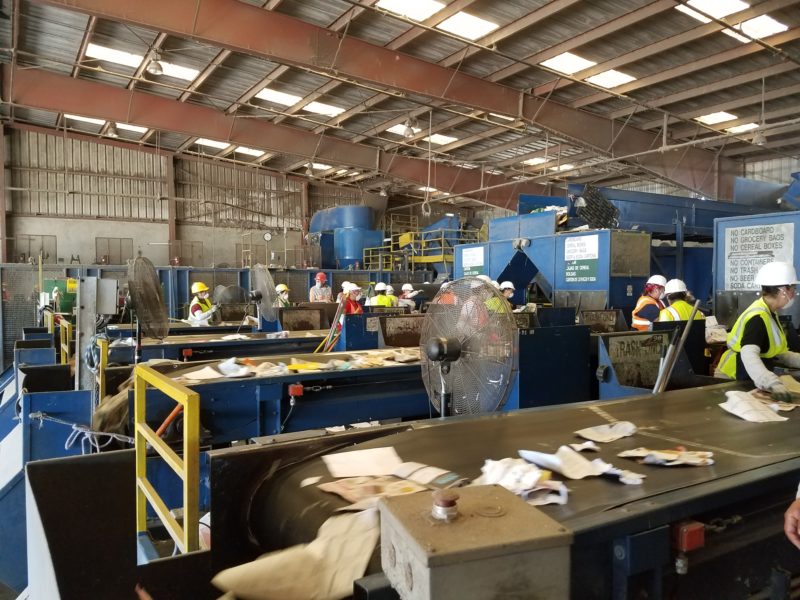About 10,000 tons — or 15 to 17 percent — of the recycling collected from homes in San Diego each year is thrown out. That’s because the city has a narrow list of items that can be reused by manufacturers to make new products.
by Megan Wood
Plastic bags, clothing and garden waste are all things you can recycle. But put them in your blue bin and they’ll end up at the landfill.
About 10,000 tons — or 15 to 17 percent — of the recycling collected from homes in San Diego each year is thrown out. That’s because the city has a narrow list of items that can be reused by manufacturers to make new products. Think clean carboard, paper, plastic bottles and aluminum.
Ken Prue, the city’s recycling program manager, said recyclables going to the landfill can often be blamed on “wishful recycling.” That’s when you’re not sure something is recyclable, so you toss it in your bin and hope for the best.
“I appreciate the thought or the sentiment of wanting to recycle things,” said Prue. “But it’s really critical that people just put the correct materials in the bin.”
Plastic bags and plastic wrap, for example, can get stuck in machinery and shut the whole recycling process down, creating more work for staff.
“They actually have to sit there with knives and cut the materials away from the equipment so that then they can start the machines back up and separate the recyclables,” said Prue. “It’s a lot of work. It would not be a fun job.”
Instead, the city recommends taking those plastics to grocery stores where they can be recycled.
Another problem is contaminated items. Last night’s greasy pizza box can ruin the quality of everything it comes in contact with.
Here’s how the recycling process works:
A recycling truck picks up recycling from your home and takes it to one of two material recovery facilities in San Diego. The city contracts with private companies to purchase and sort its recycling.
The recycling truck dumps its contents onto a “tipping floor,” which makes its way through machinery and onto conveyor belts.
Employees manually sort most of the recycling that moves down the conveyor belts and toss out inappropriate items.

The inside of a material recovery facility where employees sort recyclables / Photo courtesy of the city of San Diego
Recyclables are sorted by type and then packed into bales, which the companies then sell to manufacturers to make into new products.
Another item you can’t put in your blue bin is any electronic. In fact, you can’t toss electronics in either bin: In California, it’s illegal to toss electronics in your recycling or trash bins. But there’s a long list of places that will accept them.
Compared with the recycling process, little is done to monitor inappropriate items going in the trash. Trash is picked up from homes and taken directly to the landfill, where it’s buried.
The city has code enforcement officers who handle all trash-related issues, like abating homeless encampments and illegal dumping. A few of those officers also inspect bins on the curb for incorrect items.
But that happens infrequently. The city’s goal is to inspect each home’s recycling and trash bin once every five years. If they find something that shouldn’t be there, you’ll probably get an “oops tag” — a warning attached to a list of acceptable items.
For major violations, like a recycling bin full of trash, the city would tag the bin to not get collected.
The city estimates it will make $700,000 in revenue from recycling this fiscal year — a significant decrease from the last year’s $3 million in revenue.
China used to take lots of our recycling, but now only takes some cardboard because of stricter quality standards. The rest of the recycling stays in the United States or is shipped to other markets, including South Korea and Indonesia.
Megan is Voice of San Diego’s engagement editor. She is responsible for producing and overseeing the production of content that extends the reach of the organization.
Originally appeared on Voiceofsandiego.org | Photo courtesy of the city of San Diego


 (909) 335-8100 ·
(909) 335-8100 ·  (909) 335-6777
(909) 335-6777 Email:
Email: